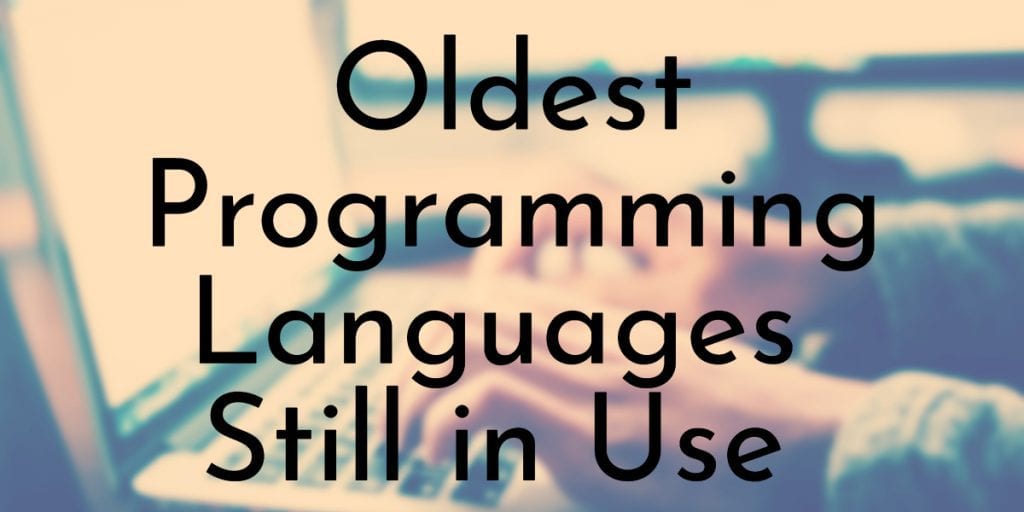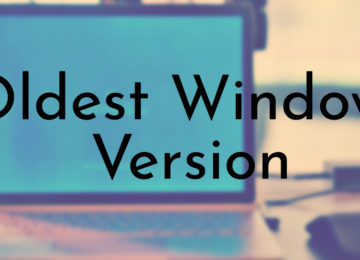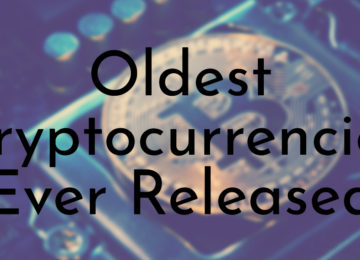While they might not be visible to the average person, programming languages literally help the modern world run by providing instructions to computers and all of our electronic devices. The first high-level programming language was Plankalkül, created by Konrad Zuse between 1942 and 1945. Since then, countless programming languages have been developed and are no longer around.
The programming languages on this list are several decades old and are still some of the most popular programming languages around.
10. MATLAB
Year Released: 1984
Designed By: Cleve Moler
[ Developer: MathWorks
Major Implementations: Used in engineering, science, and economics
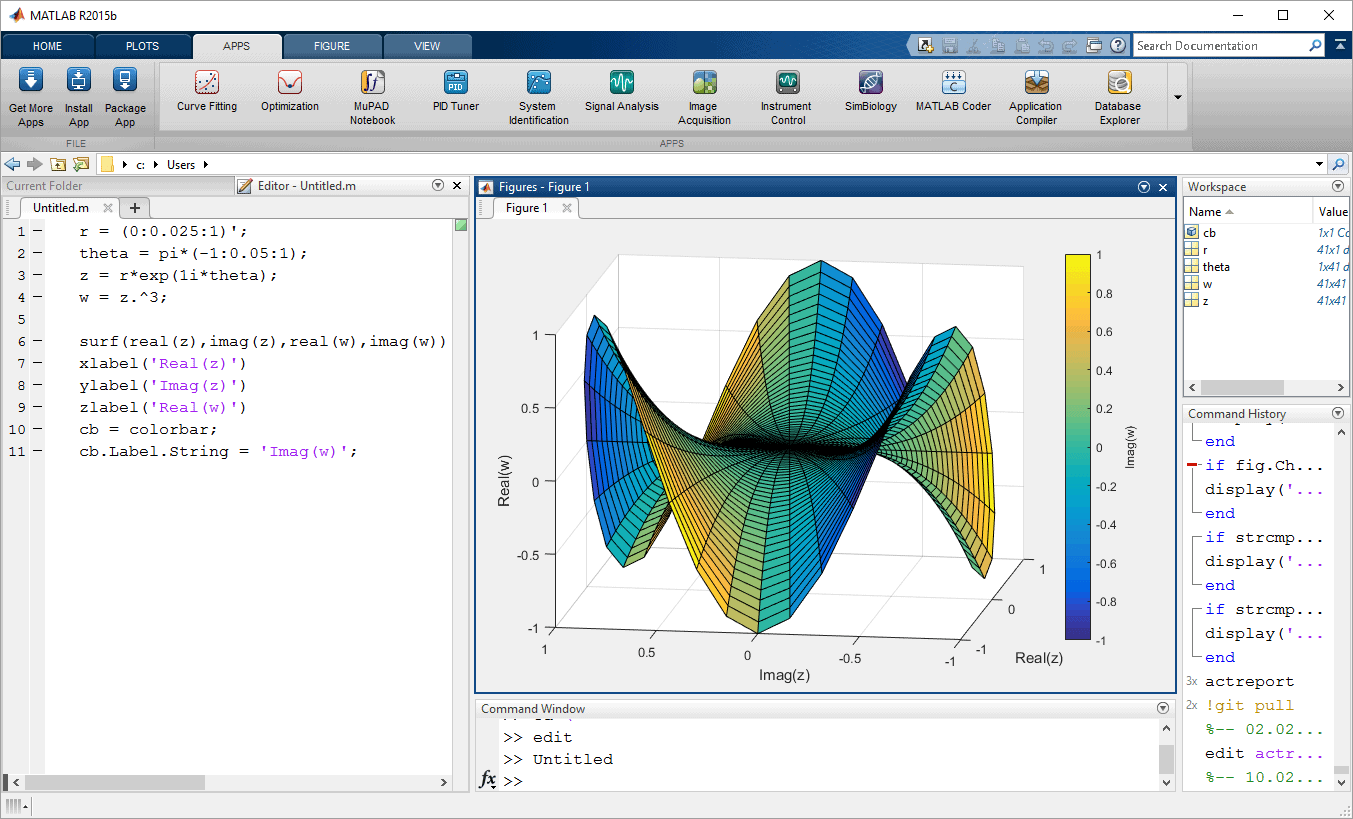
Cleve Moler designed MATLAB because he wanted to give his students access to LINPACK and EISPACK (both mathematical software libraries) without them having to learn Fortran. MATLAB was a success and has been in continuous use around the world for the last several decades.
Did You Know?
In 2020 Chinese state media reported that MATLAB had withdrawn services from two Chinese universities as a result of current U.S. sanctions.
9. Ada
Year Released: early 1980s
Designed By: Jean Ichbiah
[ Developer: United States Department of Defense
Major Implementations: AdaCore GNAT, Green Hills Software Optimizing Ada 95 compiler, PTC, Inc. PTC ApexAda and PTC ObjectAda, DDC-I Score
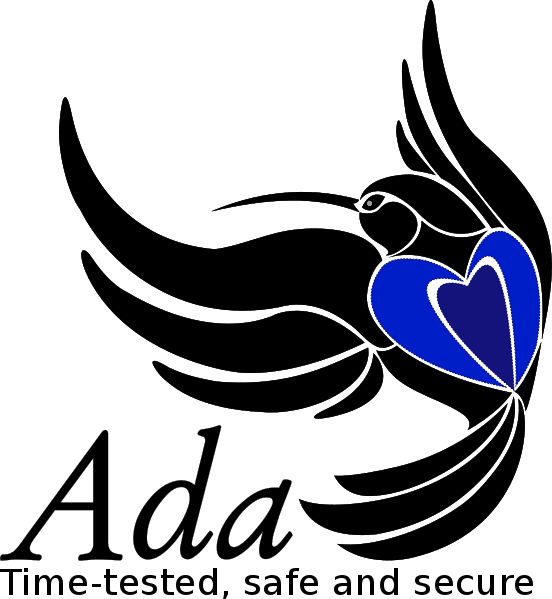
Ada was developed in the early 1980s by Jean Ichbiah and his team at CII-Honeywell-Bull in France under contract to the United States Department of Defense. The structured, statically typed, imperative, and object-oriented high-level programming language, is partially based on Pascal and other earlier languages. At the time of its development, from 1977 – 1983, the Department of Defense was using hundreds of programming languages and Ada was meant to replace all of them. Today, Ada is still used for developing very large and critical software systems.
Did You Know?
Unlike most of the other programming languages on this list, Ada is not an acronym and it was named after Ada Lovelace, who is been credited as the first computer programmer in history.
8. SQL
Year Released: 1974
Designed By: Donald D. Chamberlin and Raymond F. Boyce
[ Developer: IBM
Major Implementations: Amazon Aurora, Database Management Library, Google Fusion Tables, IBM DB2, IBM Lotus Approach, Microsoft Access, OpenLink Virtuoso, Oracle, and many more

SQL (Structured Query Language), was developed in the early 1970s at IBM by Donald D. Chamberlin and Raymond F. Boyce. SQL was one of the first commercial programming languages to use Edgar F. Codd’s relational model for database management. The programming language was created to manipulate and retrieve data stored in IBM’s database management system, System R. Since then, the American National Standards Institute (ANSI) and the International Standards Organization (ISO) have deemed the SQL language the standard language in relational database communication.
Did You Know?
One of the most popular SQL database management systems is MySQL, which was developed by Oracle in the late 1970s, following the release of IBM’s SQL.
7. Smalltalk
Year Released: 1972
Designed By: Alan Kay, Dan Ingalls, and Adele Goldberg
[ Developer: Alan Kay, Dan Ingalls, Adele Goldberg, Ted Kaehler, Diana Merry, Scott Wallace, Peter Deutsch, and Xerox PARC
Major Implementations: Amber, Dolphin Smalltalk, GemStone/S, GNU Smalltalk, Pharo, Smalltalk/X, Squeak, VA Smalltalk, VisualWorks
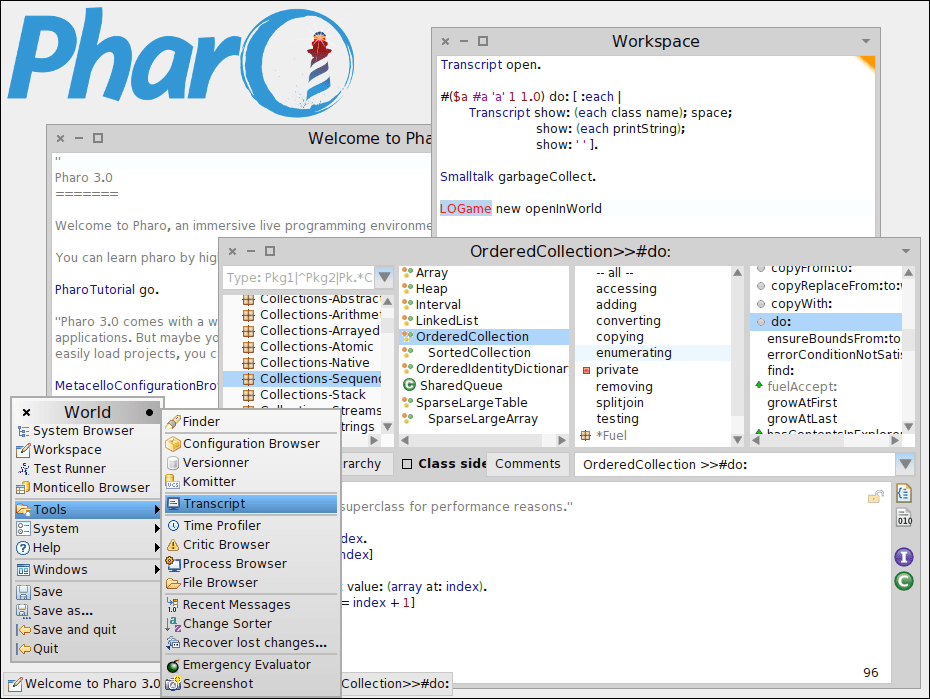
Smalltalk is an early object-oriented programming language developed by a team led by Alan Kay at Xerox PARC. It was created in part for educational use, specifically for constructionist learning (in which learners construct mental models to understand the world around them), at the Learning Research Group (LRG) of Xerox PARC. Smalltalk was not released commercially until 1980 as Smalltalk-80. Before this, Smalltalk was only run on Xerox Alto computers. Although there are more advanced object-oriented programming languages, Smalltalk is still one of the most loved programming languages of all time.
Did You Know?
Nearly all of the object-oriented languages that came after – Flavors, Java, Ruby, Python, CLOS, Objective-C, and many others – were influenced by Smalltalk.
6. C
Year Released: 1972
Designed By: Dennis Ritchie
[ Developer: Dennis Ritchie and Bell Labs
Major Implementations: K&R C, GCC, Clang, Intel C, C++ Builder, Microsoft Visual C++, and Watcom C

C is another important programming language that was widely used for used and influenced several later programming languages. A successor to the programming language B, C was originally developed at Bell Labs by Dennis Ritchie between 1972 and 1973 for the new-at-the-time Unix operating system. Over the next few years, C was used in many projects within the Bell System and also by other research-oriented industrial, academic, and government organizations. During the 1980s, C rose in popularity and went on to become one of the most widely used programming languages.
Did You Know?
C was designed to encourage cross-platform programming, making it easier to develop a program that can be ported to a wide variety of computer platforms and operating systems with few changes to its source code.
5. Pascal
Year Released: 1970
Designed By: Niklaus Wirth
[ Developer: Niklaus Wirth
Major Implementations: CDC 6000, Embarcadero Delphi, ICL 1900, Pascal-P, PDP-11, PDP-10, IBM System/370, VSI Pascal, Free Pascal, GNU Pascal

Although BASIC was still being taught at many colleges, Pascal, developed by Niklaus Wirth, became popular with students interested in more serious programming skills. Wirth created Pascal to encourage good programming practices using structured programming and data structuring. Pascal was often used by people who had minicomputers or microcomputers. In addition to being used for university-level computer programming courses, Pascal was used to write commercial software in the late 1970s and 1980s.
Did You Know?
Creator Niklaus Wirth named the Pascal programming language after famous French mathematician, philosopher and physicist Blaise Pascal.
4. BASIC
Year Released: 1964
Designed By: John G. Kemeny and Thomas E. Kurtz
[ Developer: John G. Kemeny and Thomas E. Kurtz
Major Implementations: Dartmouth BASIC, Tiny BASIC, Applesoft BASIC, Atari BASIC, Sinclair BASIC, Commodore BASIC, BBC BASIC, TI-BASIC, Casio BASIC, Microsoft BASIC, QB64, Liberty BASIC, PowerBASIC, and QBASIC
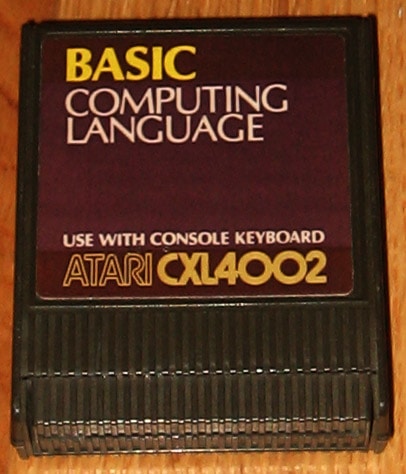
BASIC was so easy to learn that it eventually became the most widely used computer programming language. In the 1980s, use of BASIC declined, but there has been renewed interest in the programming language in more recent years.
Did You Know?
Windows Me, released in 2000, was the last Microsoft operating system to come with QBASIC.
3. COBOL
Year Released: 1959
Designed By: Howard Bromberg, Norman Discount, Vernon Reeves, Jean E. Sammet, William Selden, and Gertrude Tierney
[ Developer: CODASYL, ANSI, and ISO
Major Implementations: GnuCOBOL, IBM COBOL, and Micro Focus Visual COBOL
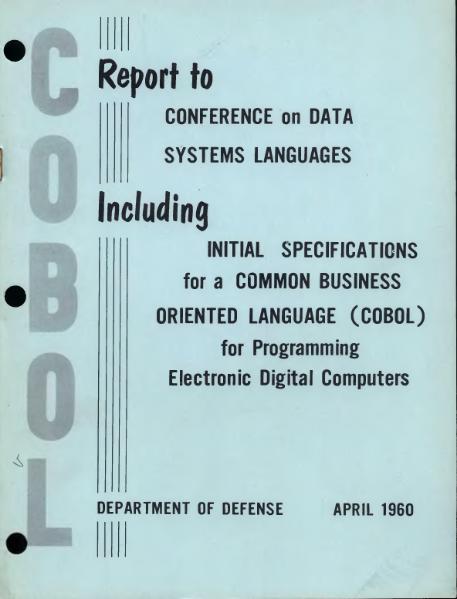
COBOL, which stands for Common Business Oriented Language was developed in 1959 by the Conference on Data System Languages (CODASYL). At the time, computer users and manufacturers were concerned about the rising cost of programming. It was suggested that if a common business-oriented language were used, conversion would become cheaper and faster. As a result of these concerns and a meeting with the Department of Defense, COBOL was born and has since been used primarily in business, finance, and administrative systems for companies and governments.
Did You Know?
COBOL was partly based on the programming language FLOW-MATIC designed by Grace Hopper
2. Lisp
Year Released: 1958
Designed By: John McCarthy
[ Developer: Steve Russell, Timothy P. Hart, and Mike Levin
Major Implementations: Widely varies depending on Lisp dialect used (Some major dialects include: Racket, Common Lisp, Scheme, and Clojure)
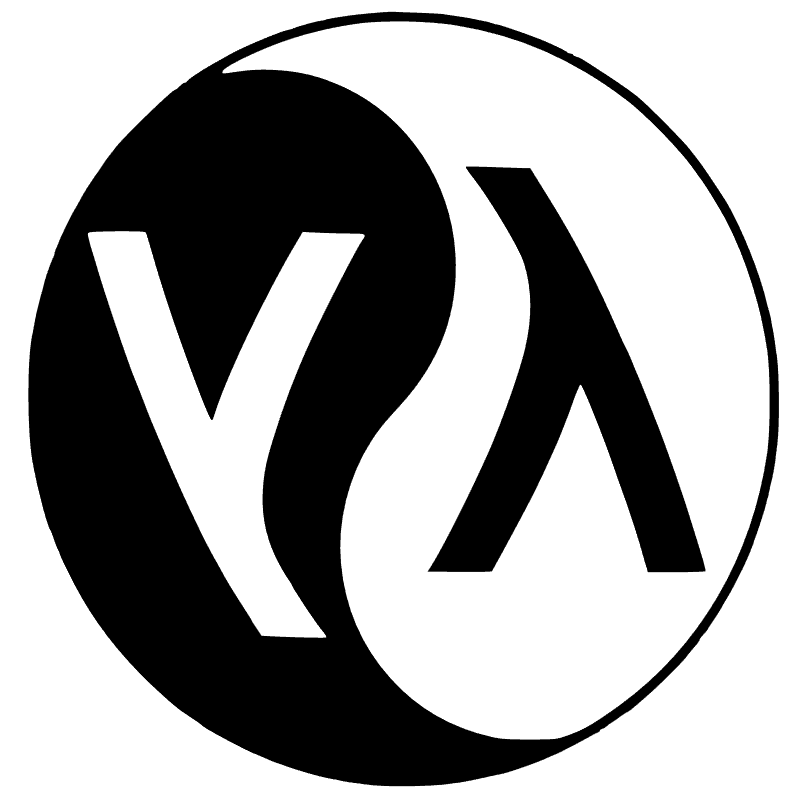
Released just a year after Fortran, Lisp is the second oldest high-level programming language still in widespread use today. Lisp was developed by John McCarthy, a legendary computer scientist, who is considered one of the founders of the discipline of artificial intelligence (McCarthy co-authored the document that coined the term “artificial intelligence.”)
McCarthy started developing the idea for Lisp during the summer of 1956 while working on the Dartmouth Summer Research Project on Artificial Intelligence. Lisp, which comes from LISt Processor, was ready for commercial release in 1958. The programming language has transformed many times over the years and there are now a wide variety of Lisp dialects (a variation of the original programming language).
Did You Know?
The best-known general-purpose Lisp dialects are Racket, Common Lisp, Scheme and Clojure.
1. Fortran
Year Released: 1957
Designed By: John Backus
[ Developer: John Backus and IBM
Major Implementations: Absoft, Cray, GFortran, G95, IBM XL Fortran, Intel, Hitachi, Numerical Algorithms Group, Open Watcom, PathScale, PGI, Silverfrost, Oracle Solaris Studio, Visual Fortran
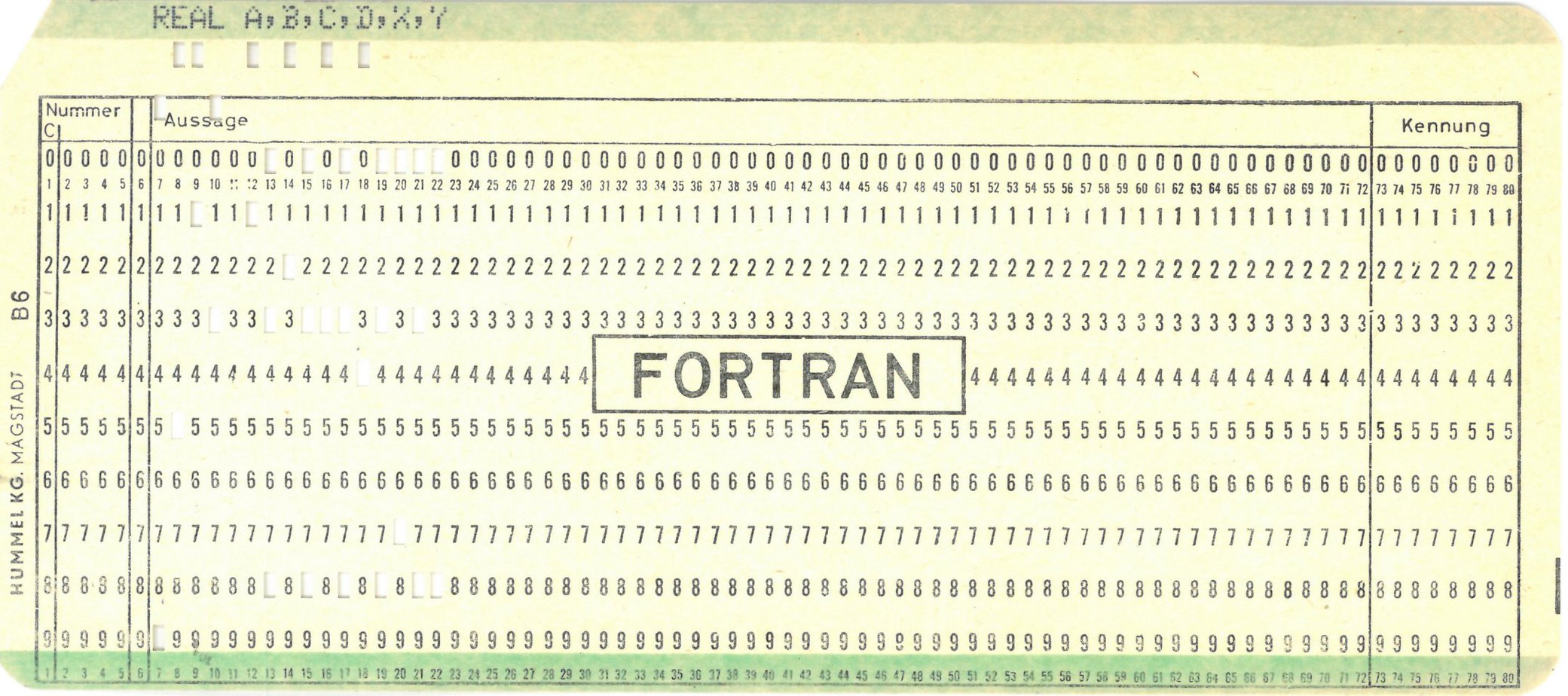
Fortran, formerly FORTRAN, was first commercially released in 1957, making it the oldest programming language still in use. The programming language was originally developed by a team of programmers at IBM led by John Backus.
In late 1953, Backus submitted a proposal to his superiors at IBM to develop a more practical alternative to assembly language for programming their IBM 704 mainframe computer. A year later, Fortran was ready for use and was released to the public three years later.
Fortran quickly changed the computer programming landscape and the language has been continuously used for the past six decades.
Did You Know?
The oldest three versions of Fortran are now obsolete and the oldest versions still in use are Fortran IV and Fortran 66. However, the most commonly used versions are Fortran 77, Fortran 90, and Fortran 95.
OTHER POSTS YOU MAY BE INTERESTED IN


